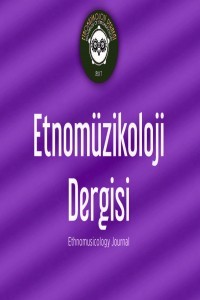Barok Dönemde Müziğin Dolaşımı; Bach’tan Günümüze Copyleft
Barok dönem bestecisi için yapıtını ortaya koymanın farklı nedenleri bulunmakta. Kilise görevleri, halka açık yerlerde seslendirilen eserler, özel siparişler, müzikle ilgilenen amatörler için çalgı metodları. Bu yüzden dönem bestecisi sürekli yazmak zorundadır. Bu durum müzik yazımında iki önemli unsuru barındırır. İlki, bu yoğun tempo içinde besteci aynı zamanda usta bir seslendirici ve doğaçlama ustası olmak zorundadır. İkincisi ise besteci her ne kadar çok üretken olmak zorunda olsa da özgün yapıtlar vermeye yetişmesi olanaksızdır. Bu yüzden gerek kendi ezgilerini gerekse diğer bestecilerin temalarını farklı çalgılar için yazdığı eserlerde kullanmak zorundadır. Bu, aynı zamanda barok dönemin önemli eser yazma yöntemlerinden biri olarak yerleşir ve dönemin en baskın ismi Johann Sebastian Bach’ta sıkça görülür.
Barok dönemin bu özelliği, günümüz müzik endüstrisinin copyright yasaları bağlamında kabul görmez. Ancak 1980’li yıllarda, Stallman öncülüğünde söz konusu yasaların yeni teknolojiyle birlikte artık işlevsel olmadığı öne sürülerek yaratıcı üretimler için “free software” hareketi başlatılır. Bu hareket, üretici, ürün ve tüketici bağlamlarında özgürlük fikrini savunan ideolojik bir yaklaşımdır. Copyright’a karşı duruş özelliğiyle “Copyleft” olarak isimlendirilir. Günümüzde copyleft yaklaşımının müziğe olan yansımasını, farklı platformlarda yer alan playlistler aracılığıyla gözlemlemek mümkün. Aynı zamanda Twitch örneğinde olduğu gibi bir yayın politikası olarak da karşımıza çıkmakta.
Anahtar Kelimeler:
Copyleft, Copyright, Barok, Müziğin Dolaşımı, Müzik Endüstrisi
Circulation of Music in the Baroque Era: Copyleft from Bach to Present
Baroque composer had different reasons for presenting work, such as church duties, works performed in public places, special orders, and instrument methods for amateurs interested in music. Therefore, a composer of the period had to write constantly. This situation contains two important elements in music writing. Firstly, the composer had to be a master performer and improviser in this intense tempo. Secondly, although very productive, the composer cannot keep up with original compositions. Therefore, he used his own melodies and other composers’ themes in works for different instruments. This establishes as one of the important writing methods of the Baroque era and is frequently seen in Bach’s works, the most dominant name of the period.
This feature of the Baroque era is not accepted in the context of the copyright laws of today’s music industry. However, in the 1980s, under the leadership of Stallman, the free software movement for creative production was initiated, claiming that the laws in question were no longer functional and that new forms of intellectual property were needed with new technology. This movement is an ideological approach that defends the idea of freedom in the producer, product, and consumer context and called “Copyleft” with its stance against Copyright.
Keywords:
Copyleft, Copyright, Baroque, Circulation of Music, Music Industry,
___
- Akıncı, İbrahim O. (2011). Güncel Sanatın Özgür Bir Şekilde Kitlelere Ulaştırılmasında Yeni Bir Model Önerisi: “Dijital Çoğaltmalar”. Doktora Tezi, Yıldız Teknik Üniversitesi Sosyal Bilimler Enstitüsü, İstanbul.
- Castells, M. (2020). İnternet Galaksisi: İnternet, İş Dünyası ve Toplum Üzerine Düşünceler (T. A. Hasdemir, Çev.). Ankara: Phoenix Yayınevi.
- Cook, N. (2009). The Economics and Business of Music. J. P. E. Harper-Scott ve J. Samson (Ed.), An Introduction to Musıc Studies (ss. 267-287) içinde. New York: Cambridge Universty Press.
- Forkel, J. N. (1920). Johann Sebastian Bach: His Life, Art and Work (C. Terry, Çev.). New York: Harcourt, Brace and Howe.
- Goehr, L. (1992). The Imaginary Museum of Musical Works, An Essay in the Philosophy of Music. New York and London: Oxford University Press.
- Heffan, I. V. (1997). Copyleft: Licensing Collaborative Works in the Digital Age. Stanford L. Rev. 1487-1521.
- Herz, G. (2014). “Bach's Religion”, (source: Journal of Renaissance and Baroque Music, v. 1, n. 2, 1946), published by: American Institute of Musicology Verlag Corpusmusicae.
- Kleiner, D. (2016). Telekomünist Manifesto (A. Temizaşık, Çev.). İstanbul: Alternatif Medya Derneği.
- Kutluk, F. (1997). Müziğin Tarihsel Evrimi. İstanbul: Çivi Yazıları.
- Lowrance, R. A. (2013). “Instruction, Devotion and Affection: Three Roles of Bach’s Well-Tempered Clavier”, Musical Offerings, v. 4, n. 1.
- Marissen, M. (1995). The Social and Religious Designs of J. S. Bach’s Brandenburg Concertos. Princeton: Princeton University Press.
- Oransay, G. (1986). Bach Klavuzu. İzmir: Küğ Yayını.
- Parrott, A. (2015). Composer’s Intensions? Lost Traditions of Musical Performance. Woodbridge: The Boydell Press.
- Schrade, L. (2014). “Bach: The Conflict between the Sacred and the Secular”, (source: Journal of the History of Ideas, v. 7, n. 2, 1946), published by: University of Pennsylvania Pres.
- Shiner, L. (2018). Sanatın İcadı: Bir Kültür Tarihi (İ. Türkmen, Çev.). İstanbul: Ayrıntı Yayınları.
- Stallman, R. M. (2002). Free Software, Free Society: Selected Essays of Richard M. Stallman. J. Gay (Ed.). Boston: Free Software Foundation.
- Turhanlı, H. (2003). Anarşik Armoni – Politik Avangard’ın Dönüşü. İstanbul: neKitaplar.
- Uyanık, Ş. (2019). Müzikte Telif Haklarının Sosyal ve Ekonomik Yansımaları. Yayımlanmamış Yüksek Lisans Tezi, İstanbul Üniversitesi Sosyal Bilimler Enstitüsü İstanbul.
- Williams, P. (2007). J. S. Bach: A Life in Music. Cambridge: Cambridge University Press.
- Yıldız, B. (2022). Etnomüzikoloji Tarihi ve Tarihyazımına Genel Bir Bakış. U. Özdemir, M. Demir, & E. H. Öğüt (Ed.), Etnomüzikoloji: Kültürler ve Müzikler (s. 13-41) içinde. İstanbul: İthaki Yayınları.
- ISSN: 2619-9572
- Yayın Aralığı: Yılda 2 Sayı
- Başlangıç: 2018
- Yayıncı: Etnomüzikoloji Derneği
Sayıdaki Diğer Makaleler
TÜRK HALK MÜZİĞİNDE DOĞAÇLAMA BİR İCRA GÖSTERGESİ OLARAK “AÇIŞ”
Perminus MATİURE, Solomon GWEREVENDE
Türkiye’de Bir Popüler Müzik Pedagojisi Girişimi ve Sonuçları: Tamam Mı Devam Mı?
Borçalı Karapapak Türklerinde Bir Etno-Sembol Olarak Müziğin Varlığı
Caner BEKTAŞ, Aykut ÇEREZCİOĞLU
Kolektif Hafıza Ve Hafıza Mekânı Bağlamında Kars Âşıklık Geleneği
BİR DEMİSTİFİKASYON ÖRNEĞİ: SEMAHTAN KOL OYUNU VE MENGİ'YE
Dilan ÖZDEMİR, Şeyma ERSOY ÇAK
Popüler Kültürden Korkmanın Modası Geçti mi? Yüksek Kültür-Popüler Kültür Ayrımına Yeniden Bakış
Süreli Yayın İncelemesi: Musiki Mecmuası
Barok Dönemde Müziğin Dolaşımı; Bach’tan Günümüze Copyleft
Çokkültürlü ve Ulusötesi Bir Uzam Olarak Mütareke Yılları İstanbul’unda Caz
